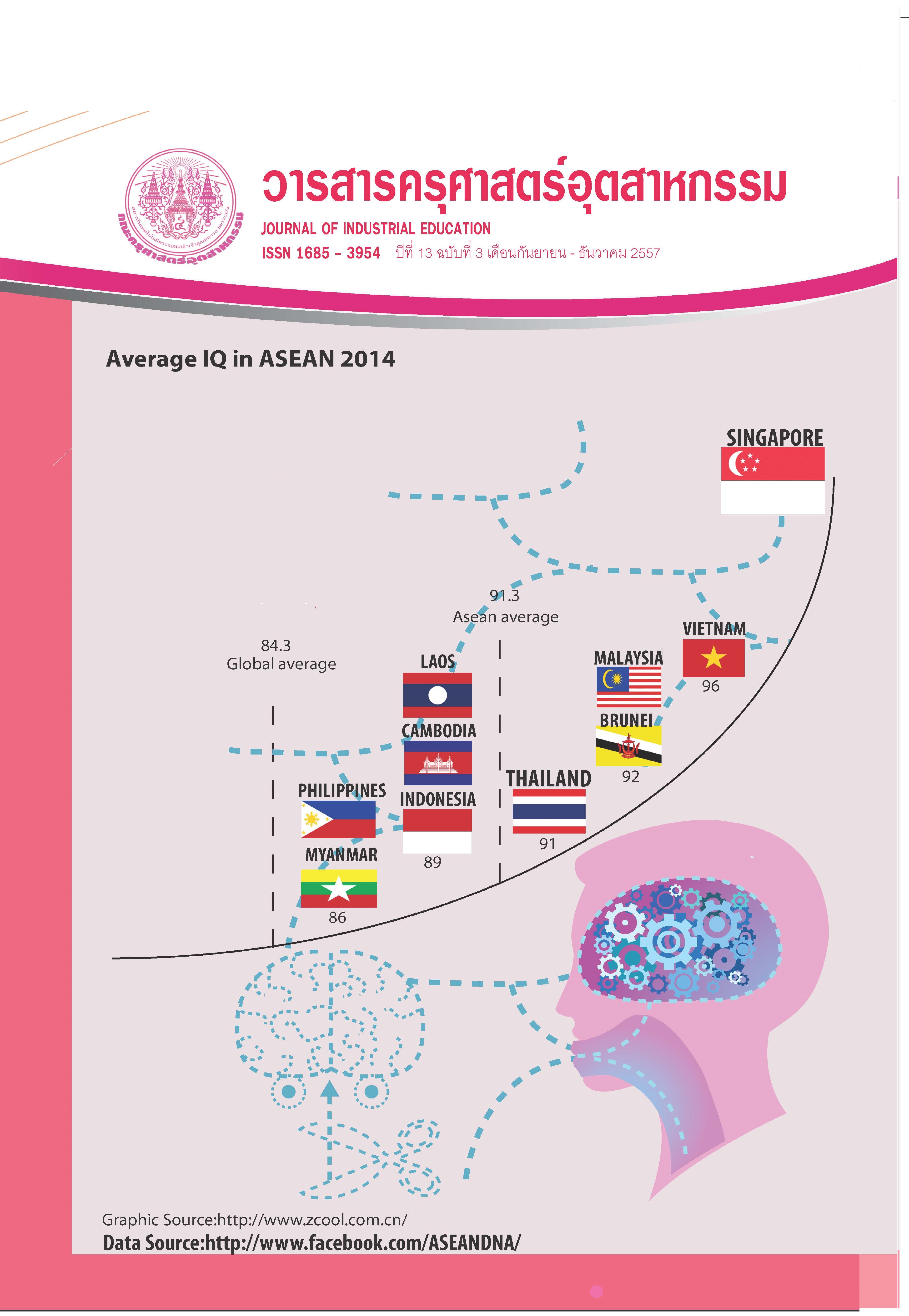Development of Biodiversity Conservation Model
Main Article Content
Abstract
The objective was to compare the mean scores between pretest and posttest of biodiversity knowledge,environmental education, environmental conservation inspiration, environmental conservation behavior and to develop trainers who are able to transfer biodiversity knowledge to others. The quasi-experimental research was employed in 40 high school students at Chiang-Yuen School, Chiang-Yuen District,Mahasarakham Province. Participation-Appreciation-Influence-Control (PAIC) was conducted and it was integrated with Three Dimensional Evaluations employed in examining the participation and Four Dimensional Evaluations used for trainer role play evaluation. One-way ANOVA was used to examine the mean scores difference between three and four groups. They were collected by purposive sampling technique based on criteria of public mind and commitment to participate via the whole research process.
After PAIC was implemented, the results revealed that the mean scores of posttest of biodiversity knowledge, environmental education, environmental conservation inspiration, environmental conservation behavior and training achievement were higher than pretest with statistical significance (p < 0.01 for all aspects). Additionally, it also obtained the trainers who are able to transfer biodiversity knowledge to others.In present and future situations it was illustrated that mean scores were different with statistical significance (p < 0.01 and p < 0.01). Additionally with Four Dimensional Evaluation, the mean scores were different with statistical significance (p < 0.01).
Article Details
"The opinions and contents including the words in papers are responsibility by the authors."
"ข้อคิดเห็น เนื้อหา รวมทั้งการใช้ภาษาในบทความถือเป็นความรับผิดชอบของผู้เขียน"
References
[2] Gaston, K. J. (2000). “Global patterns in biodiversity. Nature, 405 (6783) p. 220–227.
[3] McPeek, M.A.; Brown, J.M. (2007). Clade Age and Not Diversification Rate Explains Species Richness among Animal Taxa. The American Naturalist, 169 (4), E97–E106.
[4] Nakpradub, S. (2013). Knowledge and Attitude Affecting Enterprise Resources Planning (ERP) System for Managing Officer Positions at Bangkok Spring Industrial Co., Ltd. Journal of Industrial Education. 12(1), p. 106.
[5] Ngarmsang, K., Thiengkamol, N., & Thiengkamol,C. (2012a). Development of an Environmental Education Prototype of Learning Disability Student through PAIC Process. EuropeanJournal of Social Sciences, 32 (2), p. 178-186.
[6] Chivian, E. and Bernstein, A.S. (eds). (2008).Sustaining Life: How Human Health Depends on Biodiversity. New York: Oxford University Press.
[7] Mendelsohn, R.; Balick, M. J. (1995). The value of undiscovered pharmaceuticals in tropical forests. Economic Botany, 49 (2), p. 223–228.
[8] Rabosky, D.L. (2009). Ecological limits and diversification rate: alternative paradigms to explain the variation in species richness among clades and regions. Ecology Letters,12 (8) p. 735–743.
[9] Saisunantharom, S. (2013). Model of Biodiversity Conservation. Dissertation of Philosophy of Science, Department of Environmental Education, Faculty of Environment and Resource Studies, Mahasarakham University.
[10] Sproull, N.L. (1995). Handbook of Research Method: A Guide for Practitioners andScientific teachers in the Social Science.(2nd ed.). Metuchen, NJ: Scarecrow Press.
[11] Sproull, N.L. (1995). Handbook of ResearchMethod: A Guide for Practitioners and Scientific teachers in the Social Science. (2nd ed.). Metuchen, NJ: Scarecrow Press.
[12] Hill, M. O. (1973). Diversity and evenness: a unifying notation and its consequences.Ecology, 54, p. 427–432.
[13] Office of National Economic and Social Development Plan. (2010). The Tenth National Economic and Social Development Plan B.E. 2550-2554.Retrieved from: https://www.nesdb.go.th/Default.aspx?tabid=90 (Sep 19, 2013).
[14] InWent-DSE-ZEL. (2002). Regional TrainingCourse “Advanced Training of Trainer”.Grand Jomtien Palace. Pattaya City.Thailand.
[15] Langly, A. (1998). “The Roles of Formal Strategic Planning” Long Range Planning. Vol. 21, No.1 p. 3-120.
[16] Rabosky, D.L. (2009). Ecological limits and diversification rate: alternative paradigms to explain the variation in species richness among clades and regions. Ecology Letters,12 (8) p. 735–743.
[17] Chaisena, K., Thiengkamol, N., &Thiengkamol, C. (2013). “Environmental Conservation Promotion for Food Stand Entrepreneur. European Journal of Scientific Research, 104 (4) p. 603-613.
[18] Gonggool, D., Thiengkamol, N., &Thiengkamol, C. (2012a). Development ofEnvironmental Education Volunteer Network through PAIC Process. European Journal of Social Sciences, 32 (1)p. 136-149.

